Abstract
The heterotrophic uptake technique was modified to provide a rapid and simple technique for estimating the rates of biodegradation of organic pollutants under environmental conditions. The methodology is based on an evaluation of uptake into cells and subsequent respiration of radiolabeled organic substrates in short-term experiments. The resulting data can be used to calculate either turnover times or, if multiple concentrations of substrate are used, kinetic parameters. The procedure was applied to assess the biodegradation rates of m-cresol, chlorobenzene, nitrilotriacetic acid, and 1,2,4-trichlorobenzene in fresh, brackish, and marine water samples from the coastal areas of North Carolina. Saturation kinetics for uptake were obtained with each of the compounds tested. Rates of metabolism were shown to be dependent on sample location and time of year.
Full text
PDF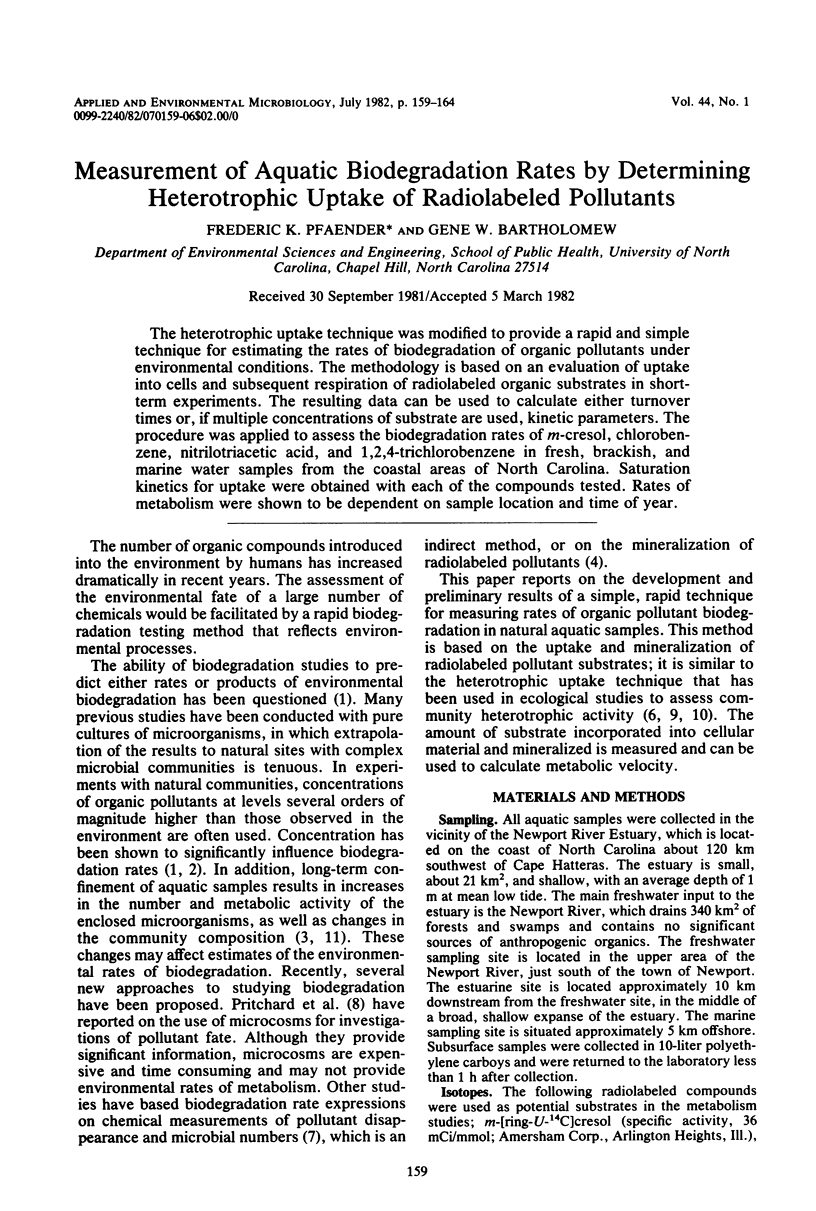
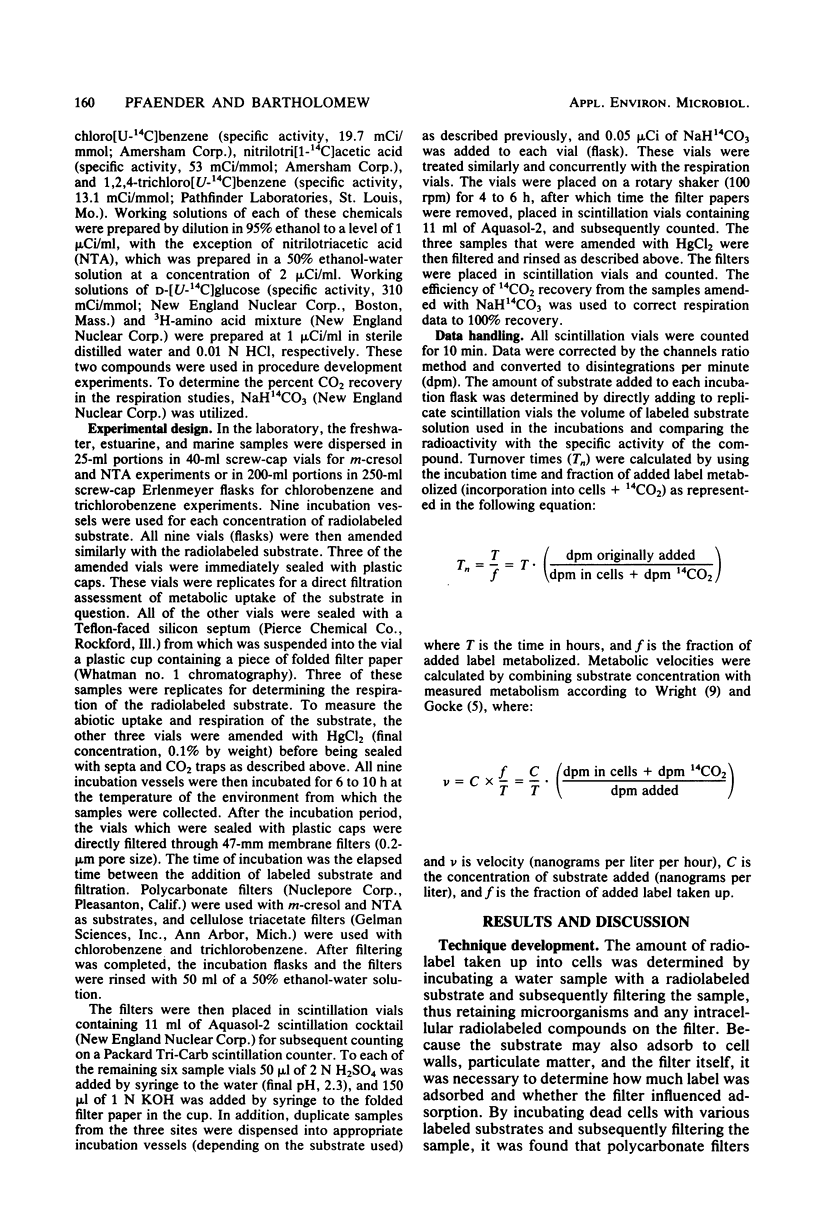
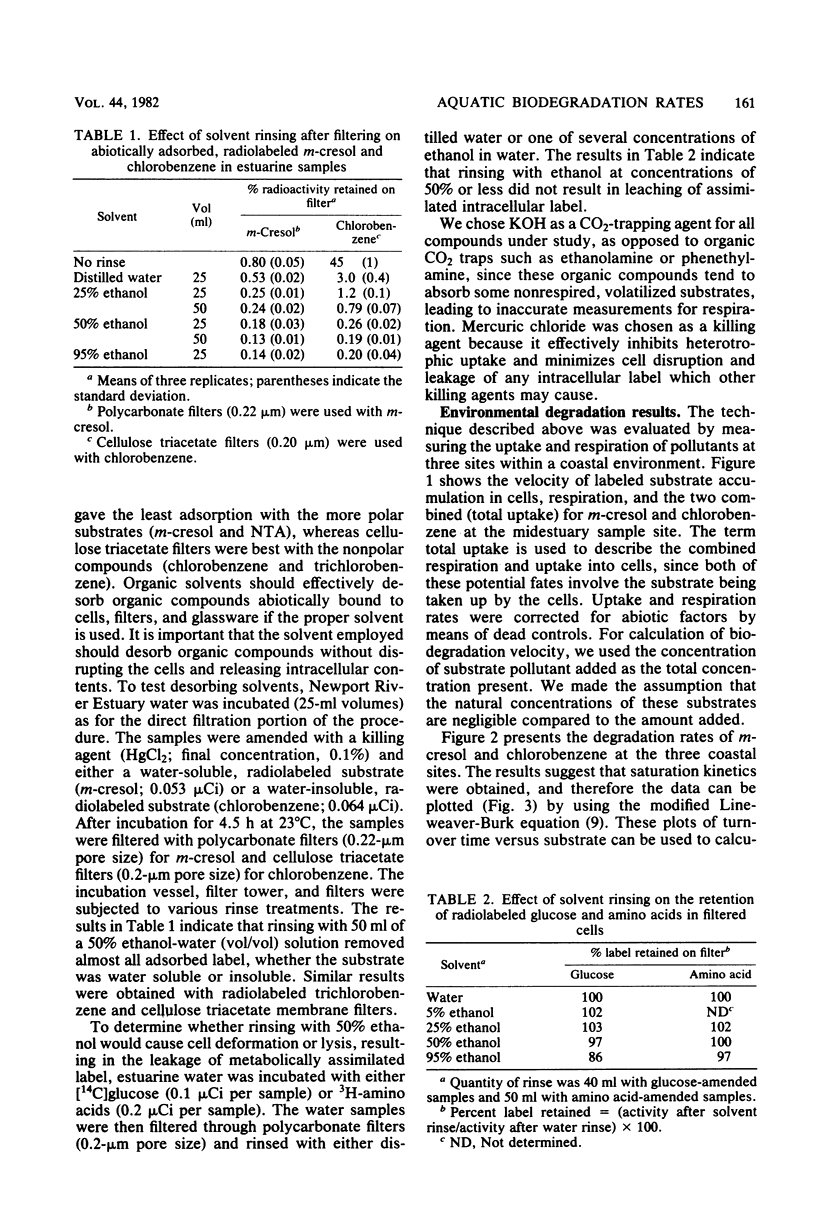
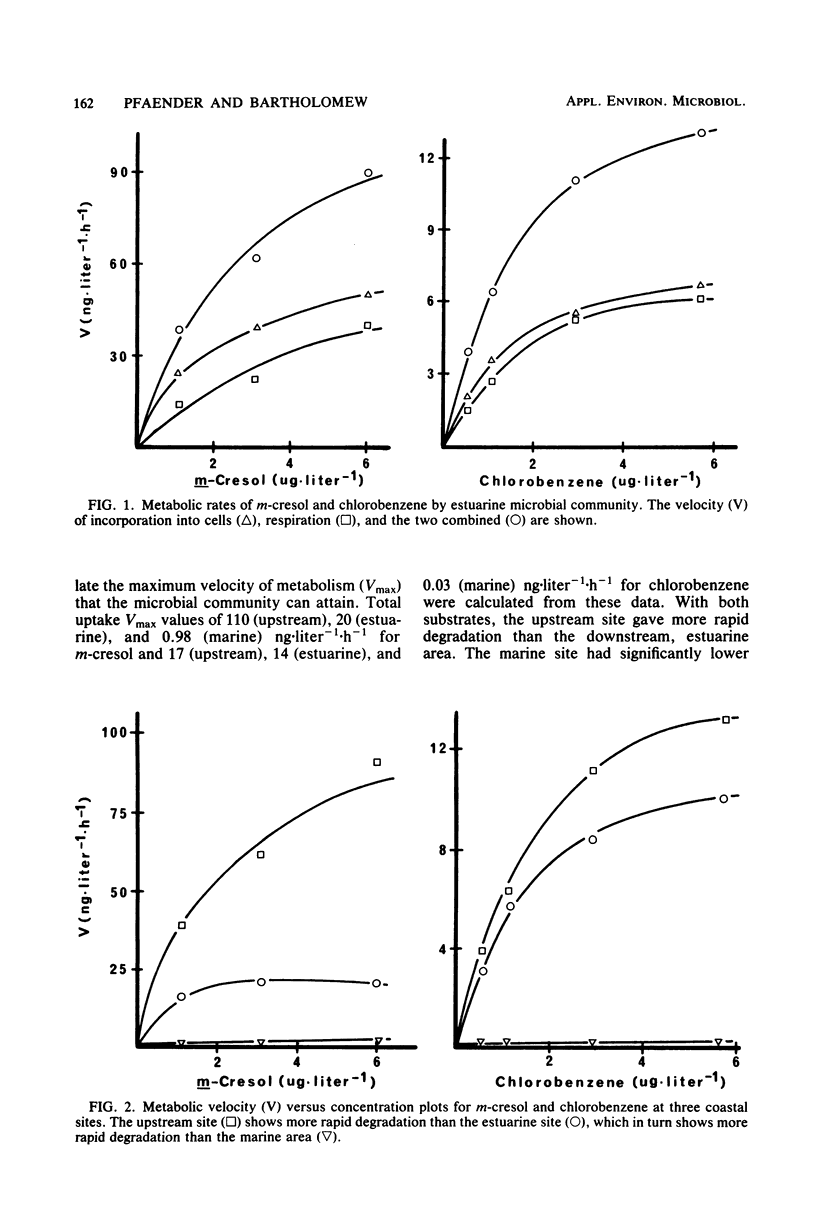
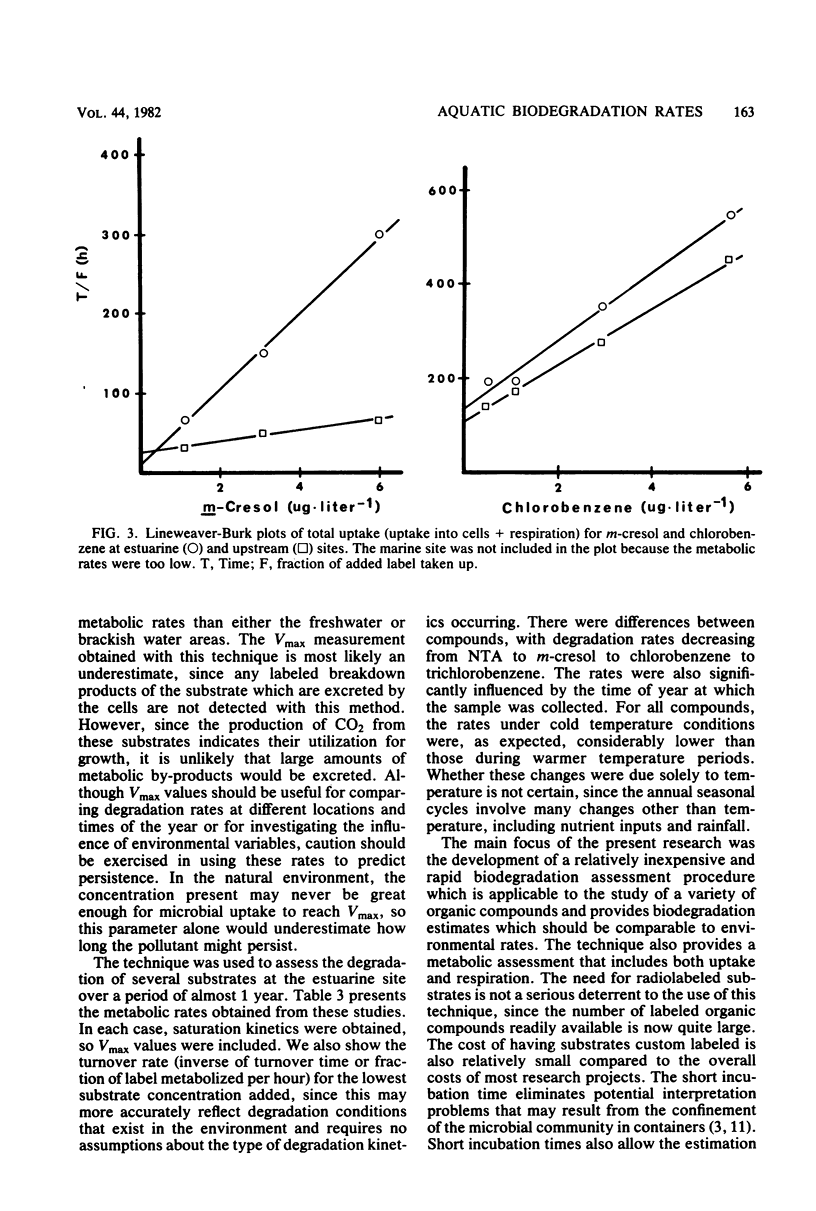
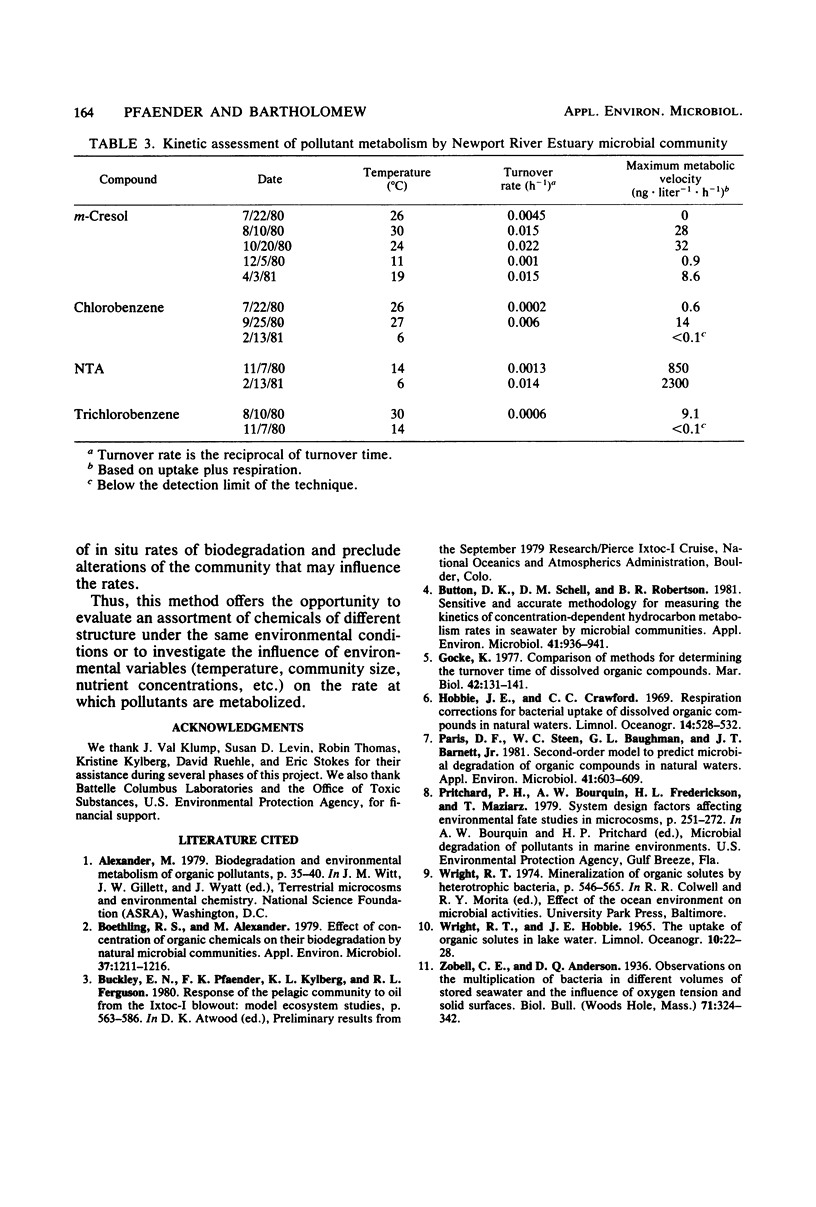
Selected References
These references are in PubMed. This may not be the complete list of references from this article.
- Boethling R. S., Alexander M. Effect of concentration of organic chemicals on their biodegradation by natural microbial communities. Appl Environ Microbiol. 1979 Jun;37(6):1211–1216. doi: 10.1128/aem.37.6.1211-1216.1979. [DOI] [PMC free article] [PubMed] [Google Scholar]
- Button D. K., Schell D. M., Robertson B. R. Sensitive and accurate methodology for measuring the kinetics of concentration-dependent hydrocarbon metabolism rates in seawater by microbial communities. Appl Environ Microbiol. 1981 Apr;41(4):936–941. doi: 10.1128/aem.41.4.936-941.1981. [DOI] [PMC free article] [PubMed] [Google Scholar]
- Paris D. F., Steen W. C., Baughman G. L., Barnett J. T. Second-order model to predict microbial degradation of organic compounds in natural waters. Appl Environ Microbiol. 1981 Mar;41(3):603–609. doi: 10.1128/aem.41.3.603-609.1981. [DOI] [PMC free article] [PubMed] [Google Scholar]


